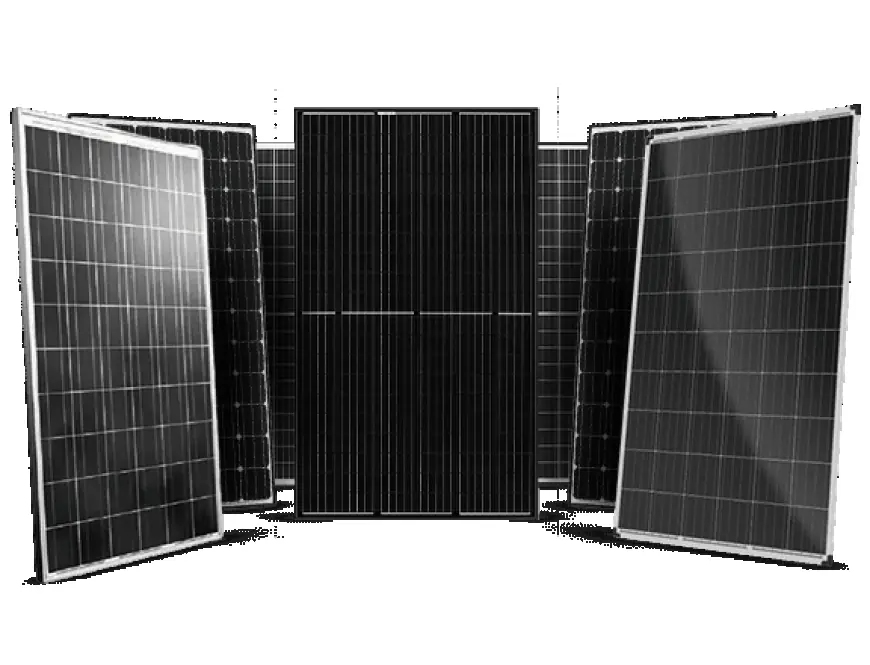Harnessing the Sun: The Ultimate Guide to Solar Panels
Imagine harnessing the sun’s energy to power your home and reduce your electricity bills simultaneously. Sounds futuristic, right? Well, that future is here, thanks to solar panels! With increasing environmental awareness and soaring electricity costs, solar panels are becoming a go-to solution for homeowners and businesses alike.

Imagine harnessing the sun’s energy to power your home and reduce your electricity bills simultaneously. Sounds futuristic, right? Well, that future is here, thanks to solar panels! With increasing environmental awareness and soaring electricity costs, solar panels are becoming a go-to solution for homeowners and businesses alike. Let’s dive into the world of solar energy and uncover why it’s the ultimate way to power your life sustainably.
What Are Solar Panels?
Devices called solar panels are made to collect sunlight and turn it into electrical power. At their core, they use photovoltaic (PV) cells to generate power from sunlight. Electrons in these cells are excited by sunlight, which results in an electric current. This clean, renewable energy can then power your home, business, or even electric vehicles.
Types of Solar Panels
Monocrystalline Solar Panels
These are made from a single crystal structure, offering high efficiency and a sleek black appearance. They’re perfect if space is limited, as they produce more energy per square foot. The solar battery price has significantly decreased over the past few years, making renewable energy more accessible to homeowners.
Polycrystalline Solar Panels
Produced from multiple silicon crystals, these panels are more affordable but slightly less efficient than monocrystalline ones.
Thin-Film Solar Panels
Lightweight and flexible, thin-film panels are ideal for unconventional installations. Nevertheless, their efficiency rate is lower than that of crystalline panels.
Benefits of Solar Panels
Reduced Energy Bills
Solar panels significantly lower electricity bills by generating power directly from sunlight.
Environmental Benefits
You may lessen your carbon footprint and help create a better environment by utilizing solar energy.
Energy Independence
Say goodbye to fluctuating electricity prices. With solar panels, you generate your own power and reduce reliance on the grid.
How to Choose the Right Solar Panels?
When selecting solar panels, consider the following:
- Efficiency: Higher efficiency panels produce more electricity.
- Durability: Check for warranties and weather resistance.
- Cost: Balance between upfront costs and long-term savings.
Solar Panel Installation Process
Site Evaluation and System Design
An expert evaluates your roof's condition, orientation, and shading to determine the best setup.
Installation Steps
The process involves mounting the panels, connecting inverters, and wiring the system.
Connecting to the Grid
Once installed, your system is linked to the power grid, allowing you to earn credits for surplus energy produced.
Costs Involved in Solar Panel Installation
The initial investment includes equipment, labor, and permits. However, maintenance costs are minimal, and the long-term savings on energy bills make it worth every penny. The majority of systems pay for themselves in five to ten years.
Government Incentives and Tax Credits
Many governments offer financial incentives to make solar panels affordable. In the U.S., for example, the federal tax credit allows you to deduct 30% of installation costs. Check local policies for additional savings.
Maintenance and Longevity of Solar Panels
Solar panels require little upkeep. Cleaning them a couple of times a year and checking for debris or damage is usually enough. Most panels last 25-30 years, with warranties to match.
Challenges of Solar Panels
Despite their benefits, solar panels have a few challenges:
- They rely on sunlight, making them less effective in cloudy regions.
- The upfront cost can be daunting, although financing options are available.
- Space is required for installation, especially for larger systems.
Future of Solar Technology
The future is bright (pun intended) for solar technology! Innovations like perovskite cells and solar windows are pushing efficiency limits. Integration with smart homes and battery storage systems ensures 24/7 power availability. Installing a solar battery for house use can significantly enhance energy independence and reduce reliance on the grid.
Conclusion
Harnessing solar energy is no longer just a trend; it’s a necessity for a sustainable future. From saving money to reducing your carbon footprint, solar panels offer a win-win solution. So, why wait? Start your solar journey today and join the renewable revolution!
FAQs
1. How do I know if my roof is suitable for solar panels?
A solar installer will evaluate factors like roof angle, shading, and space availability to determine suitability.
2. What is the average lifespan of solar panels?
Most solar panels last between 25-30 years, with consistent efficiency throughout their lifespan.
3. Can solar panels work during cloudy days?
Yes, solar panels work on cloudy days, but their efficiency is reduced compared to sunny conditions.
4. How much can I save annually with solar panels?
Savings depend on your energy usage and local electricity rates but typically range between 20-50% of your energy costs.
5. Are there financing options for solar panel installation?
Yes, many companies offer loans, leases, and power purchase agreements (PPAs) to make solar panels accessible.
What's Your Reaction?
 Like
0
Like
0
 Dislike
0
Dislike
0
 Love
0
Love
0
 Funny
0
Funny
0
 Angry
0
Angry
0
 Sad
0
Sad
0
 Wow
0
Wow
0


















































